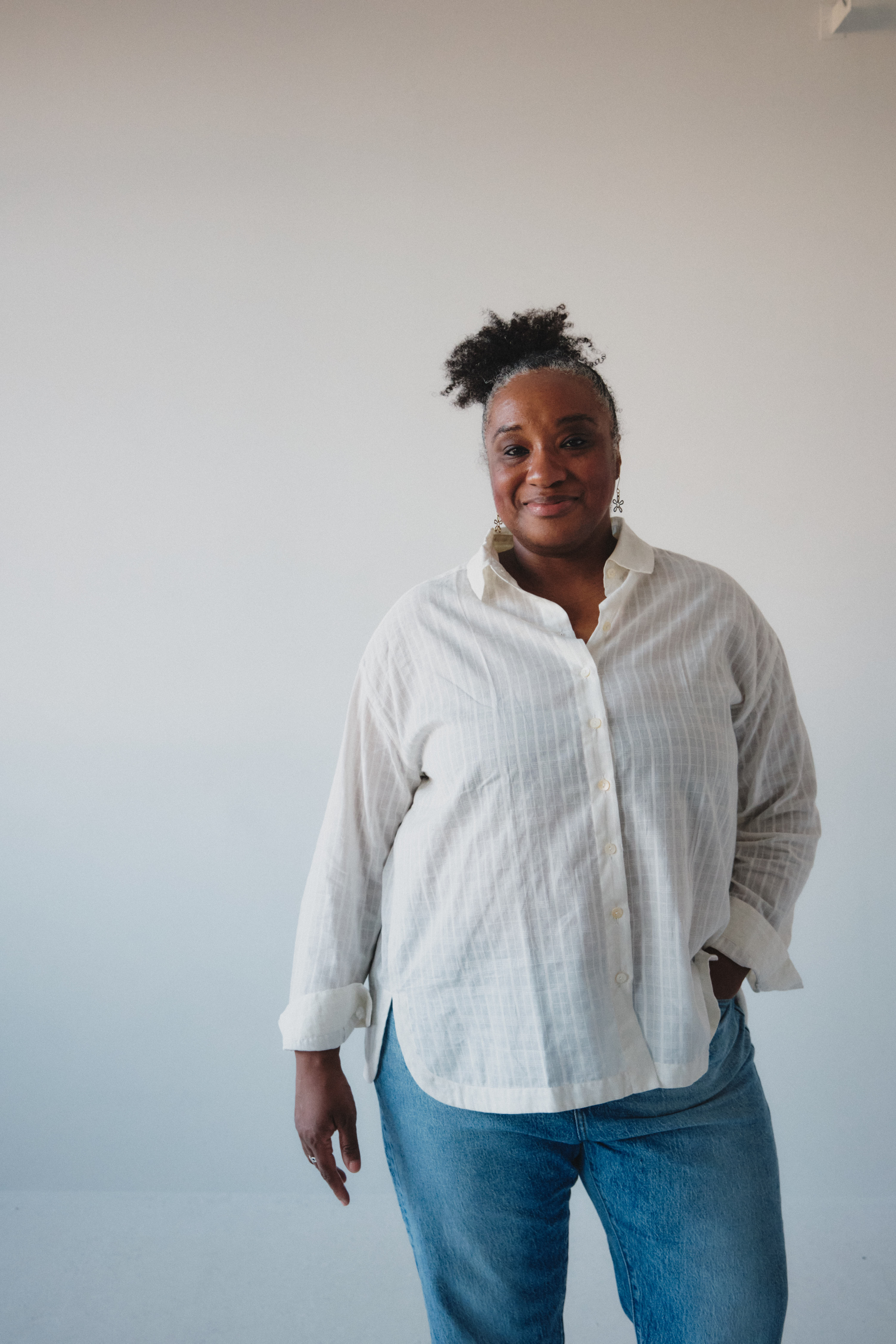
In a world where the algorithms dictates desire, it’s easier than ever to shop without thinking. A single swipe on TikTok can trigger a chain reaction – from viral trends to overstuffed wardrobes to the textile landfills of the Global South. But as the fashion industry races ahead at breakneck speed, a growing movement of thinkers, innovators, and educators are hitting pause – and asking us to do the same.
Leading the way is Aja Barber, a writer, activist and author of Consumed, whose work has been pivotal in exposing fashion’s entanglement with colonialism, capitalism and climate breakdown. “I had to have a real cold turkey watershed moment,” she says. “I found I had a massive amount of clothing I couldn’t just dump at a charity shop knowing what I now know about the colonialist waste stream that flows into Ghana.”
A mindful wardrobe starts with one step
Her solution? A year-long process of reselling, gifting, and consciously downsizing her wardrobe. “That process made me not want to buy anything,” she reflects. “It really helped me break the mindset that you can just buy something and it’ll make you happy.”

Barber’s philosophy is clear: consuming less doesn’t have to mean living less. “I can assure you, I’ll be unpacking consumerism for the rest of my life, and that's okay because we can do that in community and it can be really fun and exciting,” she says. “But everyone has to slow down. Whether it’s a cold turkey thing or two weeks where you just say, ‘I’m going to wear what’s in my wardrobe.’”
Reading, reflection– and reconnection
This shift – from buying more to buying mindfully– requires time, education and space for reflection, all of which our current culture of speed conspires against. For Barber, part of the answer lies in literacy – not just reading labels, but books. “We have to become more of a reading society,” she says. “Because when we slow down, that’s when we start to think deeper on these issues.”
It’s an idea echoed by Dr Stine Hedegaard, course leader for MA Fashion Marketing & Sustainability at London College of Fashion. Her students are in a unique position: future marketers being trained to sell in a world that urgently needs to consume less.
“We focus on a critical evaluation of this contradiction,” she says. “We explore who is responsible for fashion’s sustainable transition –government, brands or consumers – and that reflection impacts their own habits.”
Biodiversity, degrowth and a shift in mindset
At the core of her curriculum is the link between fashion and biodiversity. “Consumption practices impact the environment, nature, people and communities,” she explains. “The goal is to educate students on fashion’s dependencies on natural resources and how that contributes to biodiversity loss, and in turn discuss how marketing communication may to a greater extent inform consumers of this connection. We see a significant mindset shift when students understand how fashion impacts nature. It’s still a niche topic – but it’s growing.”
That connection to nature is vital, and it may also be a quiet form of resistance. “People who spend more time in nature absolutely consume less,” Barber insists. “When your hands are in the earth, something changes in your brain chemistry. You're connected.”
Rooted in the elements: A new way to dress
It’s this spirit that drives Amanda Charles, founder of Made of Water, a swimwear brand born from the icy tides of the Cornish coast. Her community of cold-water swimmers isn't driven by style trends – they're driven by the sea.
“Our community is everything,” she says. “Made of Water grew from a group of women meeting at sunrise to swim in freezing seas. That experience of braving the elements created a sisterhood – and changed the way we see clothing.”

Her suits are made from ECONYL®, which is regenerated nylon from ocean waste, and are tested in the Atlantic, not a lab. “We don’t chase trends,” Charles explains. “We use social media to share stories, not sell. It’s about showing real people who live slowly and dress with intention.”
Closing the loop: Technology meets textile waste
But there’s another side to this conversation: innovation at scale. While many individuals are rethinking their wardrobes, the industry’s infrastructure remains rooted in waste. Enter RE&UP, a textile-to-textile recycling startup with bold ambitions.
“The world can’t regenerate fast enough for the way we’re consuming,” says Keith O’Brien, who leads global brand marketing. “Recycling textiles means we’re not just shifting the problem – we’re closing the loop.”
RE&UP’s technology breaks down blended fabrics like cotton-poly, which is a notoriously tricky task, and turns them into high-performance materials. Their latest partnership with Puma signals a turning point: a practical path to circular fashion that doesn’t sacrifice quality or style.
Yet O’Brien is clear: there’s room for everyone. “From biomaterials to regenerative design, every effort counts. But the dream is a world where nothing is non-recyclable.”
From individual choices to systemic shifts
Back at the grassroots, Barber remains focused on personal action. “If every person just bought one secondhand item instead of new, that would be monumental,” she says. “Then it grows. Suddenly your wardrobe is mostly secondhand, and now you can afford to support an ethical designer.”
Her advice for anyone feeling overwhelmed? Start small. She laughs: “Before you know it, you’ve got a compost bin and you never shut up about it.”
In an era of climate anxiety, fast fashion, and endless scrolling, it’s easy to feel detached from the natural world. But could that disconnection be driving our desire to consume more – especially when it comes to what we wear? We’re conducting a short survey to explore how our relationship with nature affects our fashion habits, and whether social media plays a role in shaping our choices. It takes just a few minutes, your input is completely confidential and will help provide insight into modern attitudes on sustainability and consumption.
Survey: Are we disconnected from nature? And is it fuelling fashion overconsumption?







